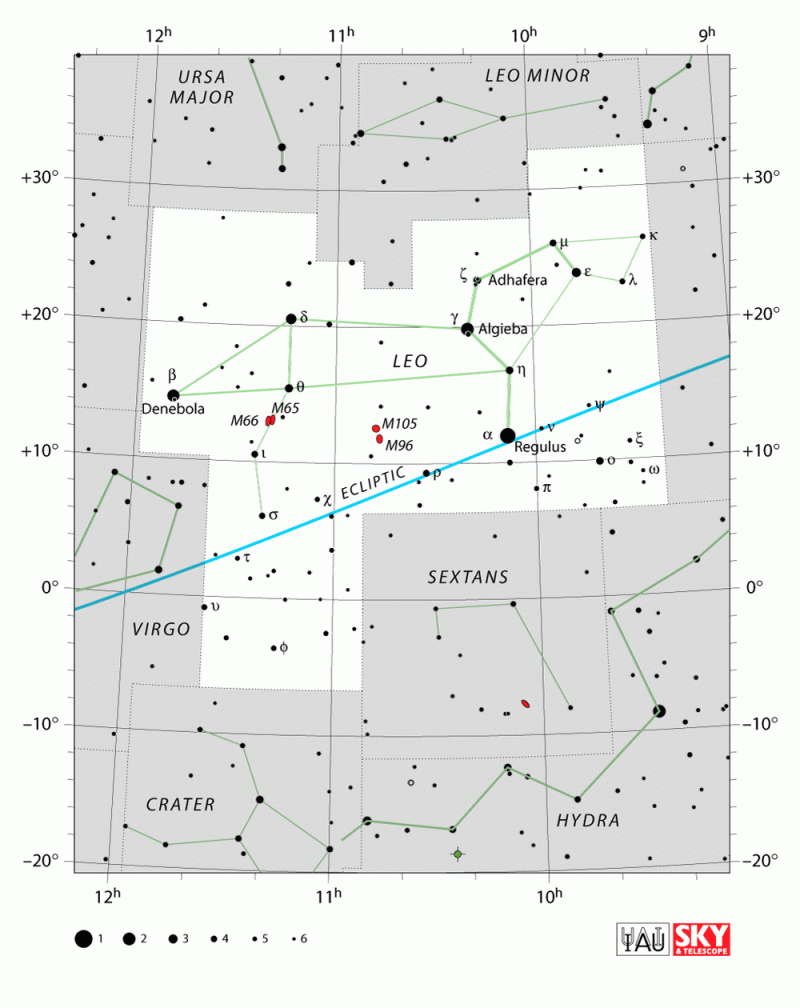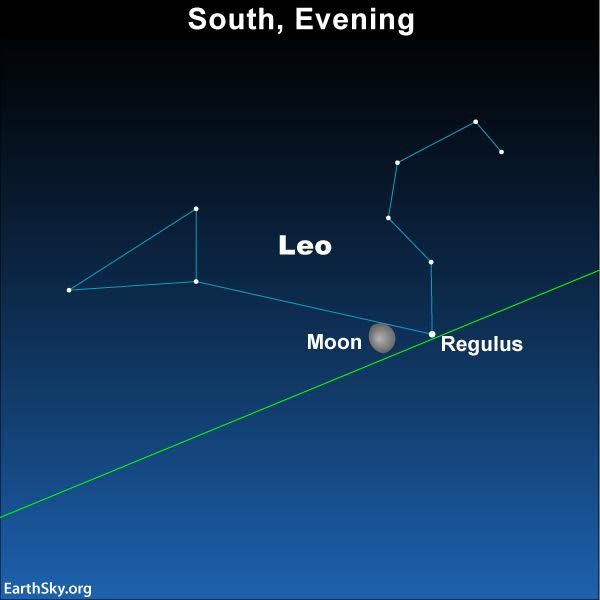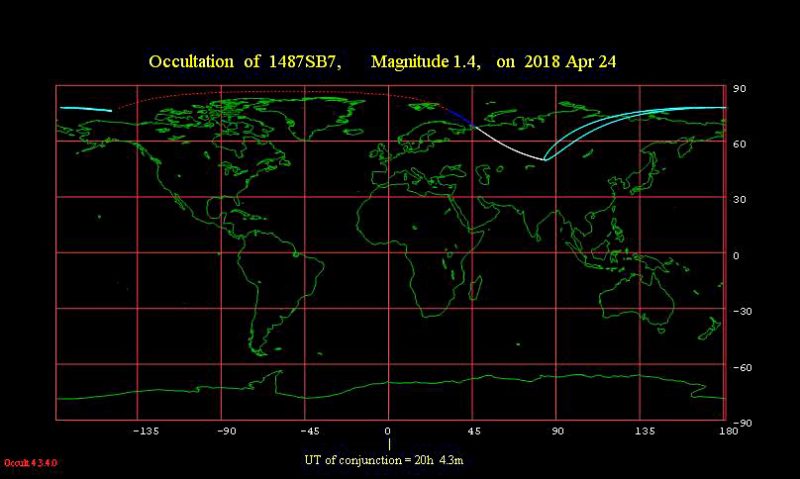On the nights of April 23 to 25, 2018, the moon is moving through the constellation Leo the Lion. An important occultation of Leo’s brightest star – the concluding occultation in a series of 19 in a row – will happen on the night of April 24. Read more about the occultation below.
The Lion is one of the easiest constellations to pick out in the sky, although – as the moon passes through it – the lunar glare will somewhat obscure the view. Still, watch for Leo’s brightest star, Regulus, sometimes called the little king. And notice the backwards question mark pattern extending above Regulus. This pattern is an asterism, not a constellation but just a noticeable pattern of stars, called the Sickle. It represents the Lion’s head and shoulders.
Also notice the triangle of stars at the rear of Leo. The brightest star in this triangle is called Denebola, which means tail of the lion.

If you see the moon on April 23, you’ll see it as it’s heading toward Regulus. Just as the sun does during the day, the moon and Regulus go westward across the sky during the night. But the moon – as always – moves eastward relative to the backdrop stars of the zodiac. The eastward motion of the moon – on April 23 to 24, toward Regulus – is a reflection of its orbit around Earth.
It’s why, in the evenings following April 23, you’ll see the moon on the other side of Regulus on the sky’s dome, as shown on the chart below:

Occultation of Leo’s bright star Regulus. From precise areas on Earth, you could watch the moon occult (cover over) Regulus on the night of April 24. Regulus will disappear behind the moon’s dark side and then reappear on its illuminated side.
This is, in fact, the concluding occultation in what has been a long series of 19 monthly occultations of Regulus by the moon. The series began on December 18, 2016, and finally concludes on the night of April 24, 2018.
Regulus undergoes these occultation series because it lies along the ecliptic, which marks the path of the sun, moon and planets across our sky. Regulus is the only 1st-magnitude star – the only one of our sky’s brightest stars – to sit almost squarely on the ecliptic.

Three other 1st-magnitude stars – that is, bright stars – reside close enough to the ecliptic to be occulted by the moon: Aldebaran, Antares and Spica. As it happens, Aldebaran, too, is in the midst of a series of 49 monthly occultations that started on January 29, 2015, and will conclude on September 3, 2018.
Antares and Spica have no occultaion series going on at present. Spica will have a series of 20 monthly occultations from June 16, 2024, to November 17, 2025. Antares will have a series of 68 monthly occultations from August 25, 2023, to August 27, 2028.
The green line on the sky charts above represents the ecliptic – Earth’s orbital plane projected onto the constellations of the zodiac. We often see the moon near the ecliptic on the sky’s dome, but not necessarily right on the ecliptic. That’s because the moon’s orbit around Earth is tilted about 5 degrees relative to Earth’s orbit around the sun.
However, the moon in its orbit crosses the ecliptic – Earth’s orbital plane – twice a month. When the moon is traveling from south to north, the moon crosses Earth’s orbital plane at its ascending node; when the moon crosses the ecliptic from north to south, it’s called the moon’s descending node.
The moon reaches its ascending node – going from south to north – on April 23. By April 24, the moon is a bit north of the ecliptic in our sky, residing a scant 1/2 degree north (1/2 degree = moon’s apparent diameter). Click here to know the moon’s present ecliptic latitude.
The moon will remain north of the ecliptic until it next crosses the ecliptic at its descending node (north to south) on May 7, 2018.
Bottom line: On the nights of April 23 to 25, 2018, enjoy the moon sweeping through the constellation Leo the Lion.












